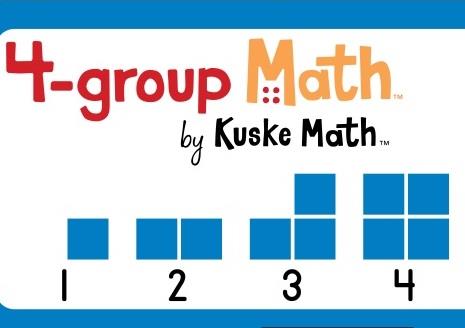More about Subitizing from Early Math Expert Lynn Kuske
One of Early Math Counts’s readers, Lynn Kuske, responded to my last post about Subitizing. and wanted to share her thoughts and methods about how she approached subtizing.
The following is her letter. You can find out more about Kuske Math and 4-Group Math by clicking here.
Dear Jen,
Here are my thoughts on subitizing for young children. I demonstrate with our materials, but the method can be implemented with handmade materials. It is not important what we use to make the number patterns. The important factor is the configuration in which we present them.
According to research by Fischer1, young children can subitize four objects in a square array. They cannot subitize linear arrays greater than three.
Therefore, we use the following patterns for preschool children to perceptually subitize the quantities 1-4.

Once they know these four subitizable component parts, preschoolers can play with them to experience the part-part-whole relationship of numbers. Later, children can combine the patterns 1-4 to conceptually subitize larger numbers.
Later, children can combine the patterns 1-4 to conceptually subitize larger numbers.

 Then they can play to combine and separate these new patterns to continue the part-part-whole relationship of numbers.
Then they can play to combine and separate these new patterns to continue the part-part-whole relationship of numbers.

Because of the integrity and consistency of these patterns children develop a keen number sense through play!
1 Fischer, J. -P. (1992). Subitizing: The Discontinuity After Three. In J. Bideaud, C. Meljac and J. P. Fischer (Eds.), Pathways to Number (pp. 191-208). Hillsdale, NJ: Lawrence Erlbaum Associates.
I\’m glad you were able to post this, Jen. I hope others will find it helpful.
For kids,
Lynn